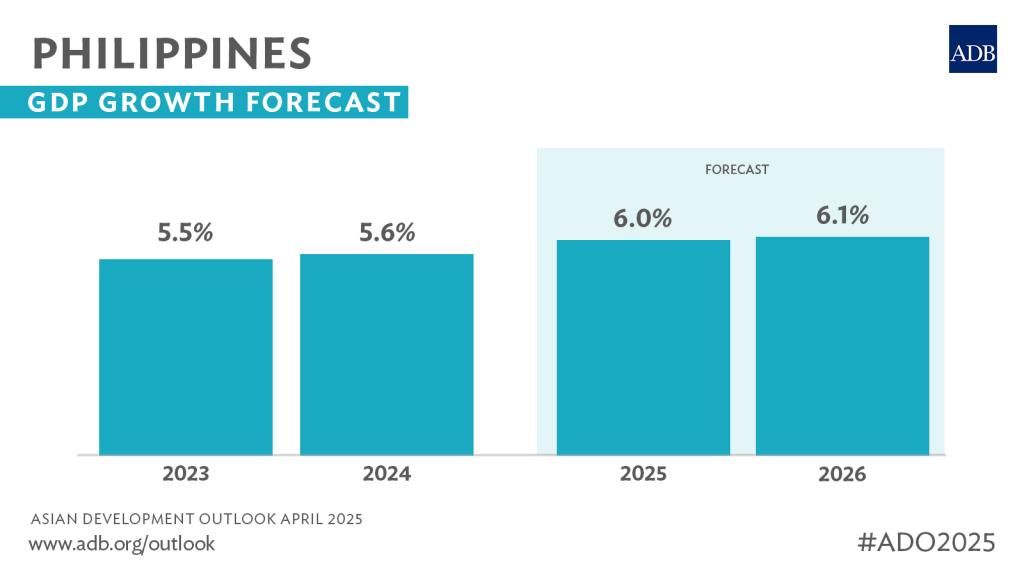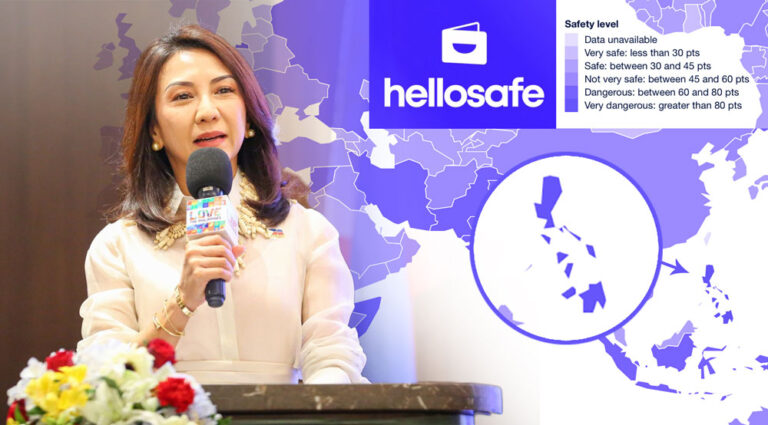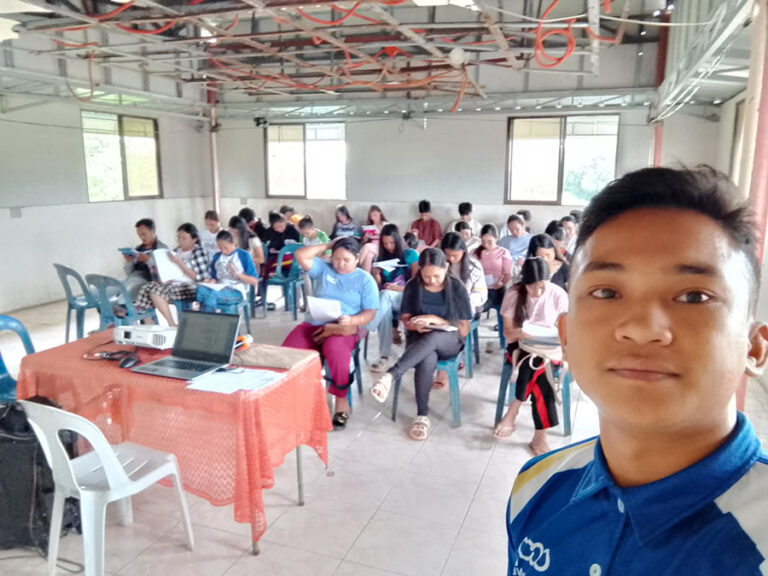
THE ASIAN Development Bank (ADB) has retained its 2025 economic growth forecast of 6 percent for gross domestic product (GDP) while lowering its inflation projection.
In its Asian Development Outlook (ADO) April 2025, the ADB kept its GDP forecast from the December 2024 report, which was higher than the 5.6 percent growth recorded in 2024.
However, the growth outlook for 2026 was slightly trimmed to 6.1 percent from 6.2 percent.
“The Philippines remains a bright spot in the Southeast Asian region, with robust private consumption and sustained investments, particularly on infrastructure, continuing to fuel growth,” ADB country director for the Philippines Pavit Ramachandran said.
The ADB expects the Philippine economy to be driven by the improvement in employment data, noting that between January 2024 and January 2025, 2.6 million fresh jobs were added to the market.
“Higher household incomes supported by minimum wage hikes in several regions, remittance inflows from Filipinos overseas, as well as election-related spending ahead of the mid-term elections in May will all help bolster domestic consumption,” it said.
Government spending is also seen to support economic expansion as public expenditure is expected to increase by 9.7 percent this year.
“A third of the budget will fund social services, including national health insurance, education, skills training and livelihood programs, conditional cash transfers, and food vouchers to low-income families,” it added.
The ADB supports social protection efforts, such as the Pantawid Pamilyang Pilipino Program, and is preparing to help finance the Walang Gutom (Zero Hunger) Food Voucher Program.
However, it noted that the GDP forecast has yet to include the potential economic impact of the 17 percent reciprocal tariff imposed by the United States government on April 9.
The ADB outlook on developing Asia, which includes the Philippines, is at 4.9 percent in 2025 and 4.7 percent in 2026.
In the ADB’s special analysis on the impact of US tariffs, the effect of reciprocal tariffs in developing Asia is estimated to cut the region’s GDP by 0.2 percentage points and another 0.1 percentage point for retaliations, for a total of 0.3 percentage points.
Trump’s tariff order is seen to further cut the growth of developing Asia next year to 0.8 percentage points and another 0.1 percentage point for retaliations, for a total of 0.9 percentage points.
Meanwhile, the ADB revised its inflation forecast for the Philippines to 3 percent for both 2025 and 2026, down from the previous 3.2 percent estimate.
“This reflects stable global commodity prices, particularly oil, and a slowdown in rice inflation,” the ADB said. (Kris Crismundo)



